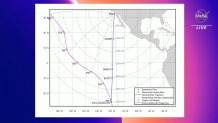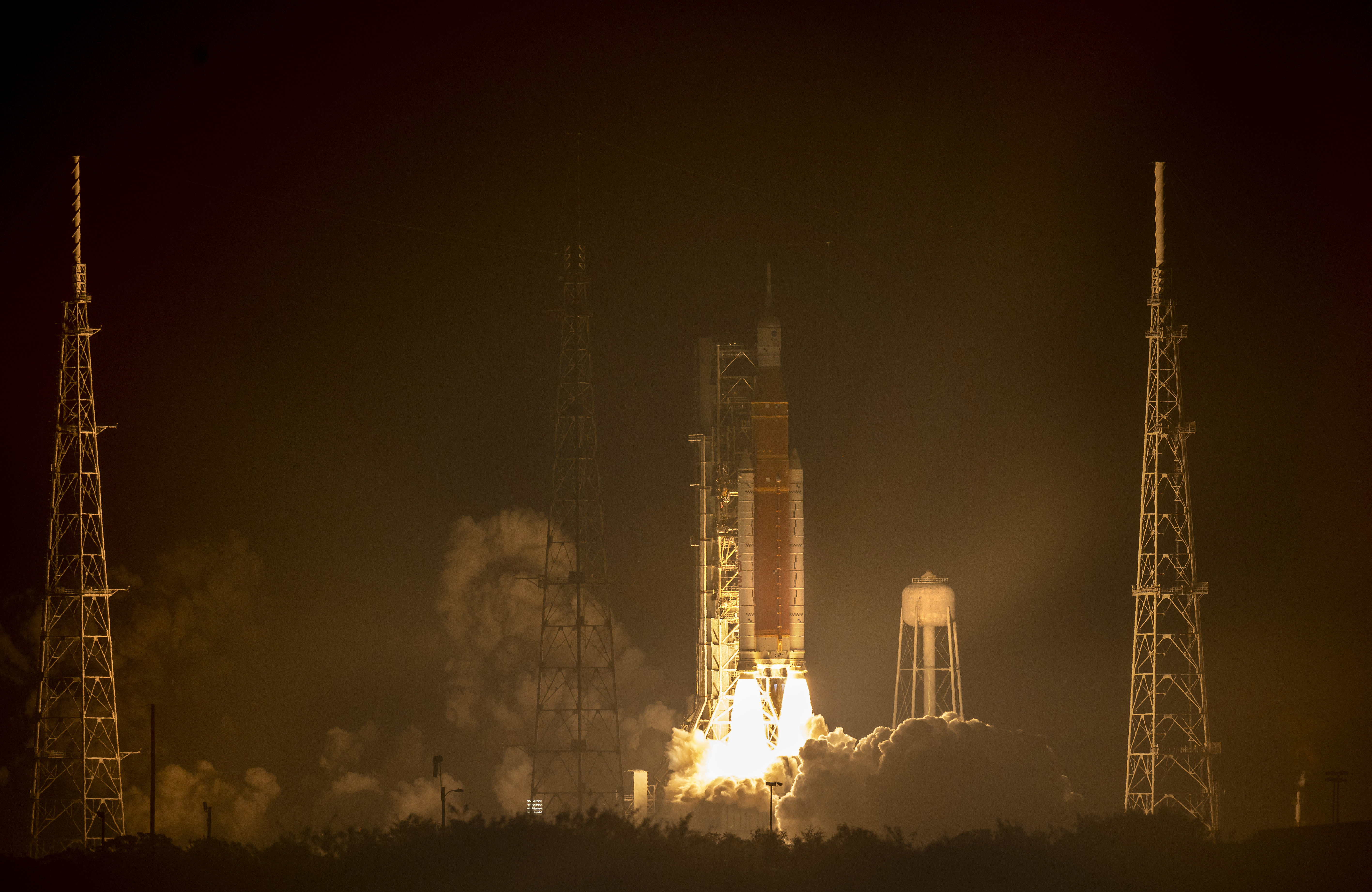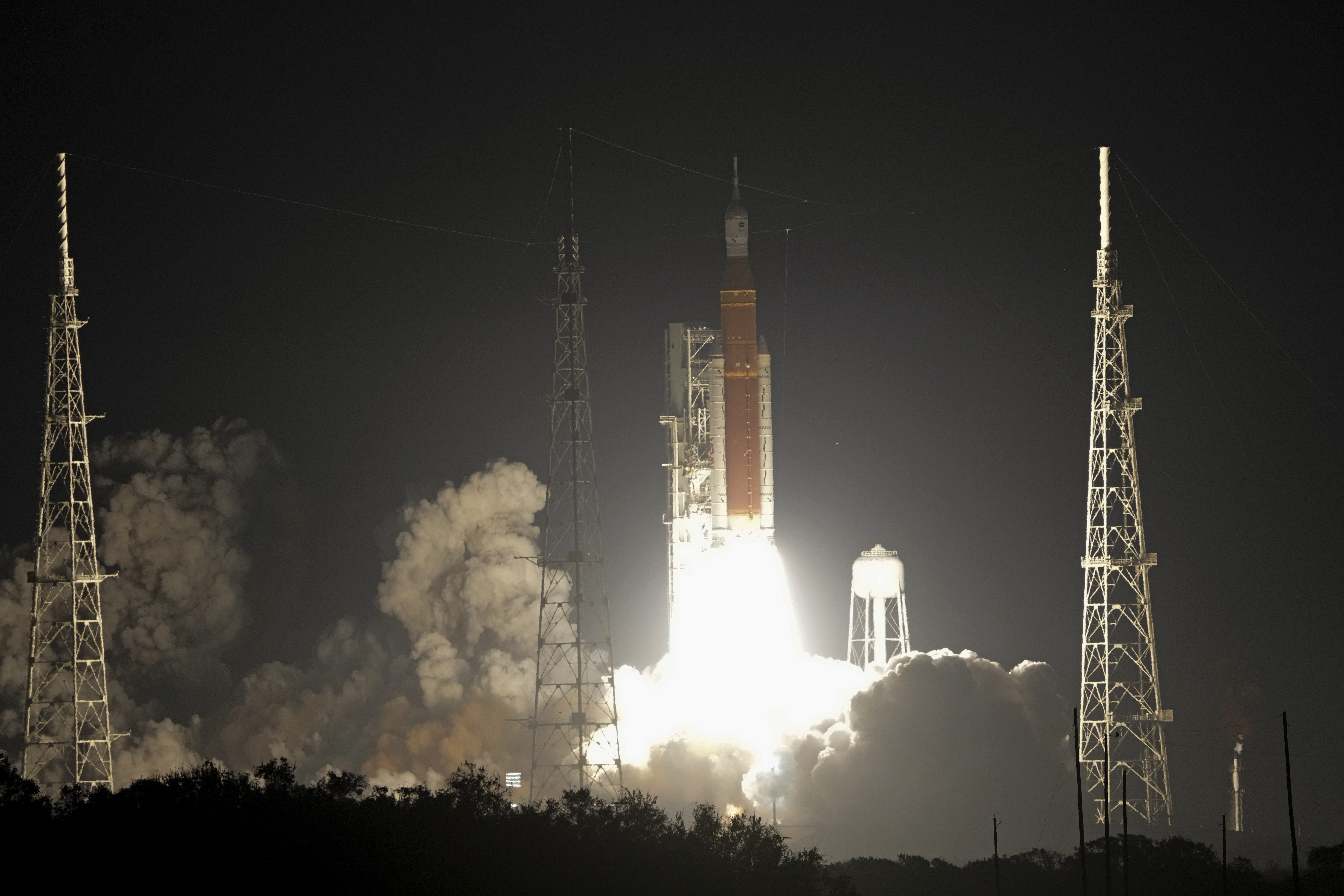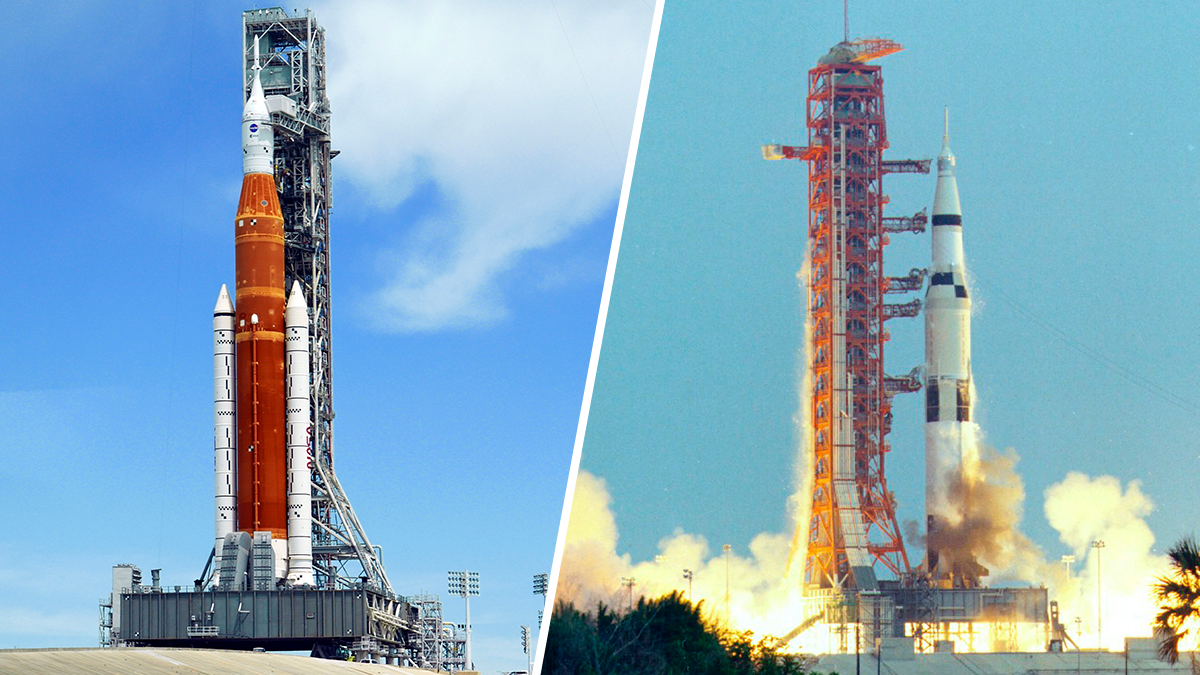Editor's Note: This story was originally published on Dec. 7, before NASA solidified Orion's splashdown destination as a point off the coast of Baja California, Mexico instead of San Diego. Read more on Orion's splashdown here.
While Florida, Texas, and Pasadena, California, are often the epicenter of NASA's space world here on Earth, San Diego will get its moment in the moonlight when the Orion spacecraft completes its final leg of the Artemis I Mission on Sunday.
Orion -- the capsule that will one day transport America's first woman and first person of color to the Lunar surface, and could ultimately take humans to Mars -- made its final orbits around the moon on Monday and was beginning its prepensed pummel towards the Pacific Ocean.
The exact location of the splashdown has not yet been determined. But, if all goes to plan, Orion will drop into the sea about 50 miles off the coast of America's Finest City Sunday afternoon.
The visual guide below outlines each phase of the Artemis I Mission. Click on phase three to see what is in store for Orion when it returns to Earth on Sunday. Learn more here.
A recovery team made up of NASA's Exploration Ground Systems (EGS) engineers and technicians and USS Portland Navy divers and sailors has been in San Diego since just after Thanksgiving to practice their role in what's expected to be a gripping return.
The team practiced for three days off the coast to reel in a mock capsule and load it onto the Naval Base San Diego-homeported ship, which was selected for being an amphibious vessel with both a flight deck and what's known as a well deck leading to the ocean.
“The mission that we're doing is kind of amphibious in nature; it's just... normally were recovering marine vehicles or hovercraft, instead of doing that, we’re just grabbing the orbital," USS Portland Capt. John Ryan said.
Video of the practice shows more than a dozen Navy sailors aboard several boats meet with a mock Orion at sea. After rigging a series of cables and hooks to the vessel, a line known as the winch pulls Orion into a yellow cradle within the ship's well deck. Water is then released back to sea and a secure Orion is transported to shore.
It sounds easy in theory, but any miscalculation, any bump to Orion could be detrimental to the capsule.
When it comes time to recover the real Orion, the entire process will take about six hours, enough time to also complete a series of tests and data collection critical for future missions. For example, the heat shield that will prevent Orion, and ultimately astronauts, from burning up when it breaks through Earth's atmosphere at temperatures of 5,000 degrees must undergo about an hour-and-a-half of image data collecting before the recovery team can pull it aboard USS Portland.
"This mission is all about gathering data so the timeline for recovery will be about six hours," NASA Landing and Recovery coordinator Melissa Jones said. "We capture a lot of that data for our flight test objectives; we'll be very careful with the capsule. We are ready and honored as an integrated team to bring Orion home on the last leg of her journey."
The Artemis Missions
If Orion was manned, the recovery team would have only about two hours to get its astronauts to shore for medical evaluation.
"Everything we’re doing right now is really to learn how to go forward with crewed missions," Jones added.
While the recovery process has been solidified, one major factor is literally left up in the air -- where exactly will Orion splash down? That will all be up to Jones and Flight Director Judd Frieling.
The ideal location for the "meet-me site," as the crew calls it, is the location where the recovery team has already been practicing, a location within a U.S.-Navy-controlled fleet training area dubbed "San Deigo site 3." But, whether that site can be used depends on a number of weather factors, including wind speeds and wave patterns. If site 3 isn't an option, there are several alternate sites further offshore from San Diego. And, if none of those work either, the Orion and USS Portland could end up at a meet-me point further north towards San Clemente Island, Frieling said.

Before the recovery team can get to work, Orion must first go through a tumultuous return to Earth. Its main goal is to avoid burning up when it re-enters Earth's atmosphere... no easy feat when you're about 40,000 feet above Earth and traveling at a speed of about 24,500 mph. Meanwhile, the flight control team on the ground will lose signal with Orion for a nail-biting five-and-a-half minutes.
Once the spacecraft is about 200,000 above Earth, it'll make a U-turn and head back to space. "Wait... back to space?" you ask. What will appear as a mistake is what NASA calls its new "skip-entry" technique, which will essentially skid Orion like a rock across the Earth's atmosphere. When Orion pivots again to head back to Earth, the capsule will be on a more direct path to a landing point closer to shore -- the closest in NASA's history -- thus protecting future astronauts who need to get to land quickly for a post-space-trip evaluation.
With Orion back within the Earth's sphere, the capsule will continue to decelerate with the help of air friction. By the time the capsule reaches 150,000 feet, it will be traveling at 8,500 mph; at 100,000 feet, 2,400 mph; and at 50K feet, it'll slow to just 528 mph. Parachutes will be released to slow Orion ultimately to a meager 20 mph, which is the speed Orion will be traveling when it plops in the Pacific Ocean.
The recovery team takes over from there and that's when the job begins for sailors with USS Portland. A six-boat team took classes with the Department of Defense and NASA to get proper training for this part of the mission.
“ I’m super excited. It's an experience that you can't really say or explain to most people because nobody can really say they've done it before,” explained Boatswain Mate First Class, Timothy Okwuosa.
Ensign Adam Regnier will be the primary lookout on the bridge and is in charge of helping to safely navigate USS Portland within about six miles of the capsule once it hits the water.
“ It’s not often you get to do something with such high visibility and such historical impact," said Ensign Adam Regnier.
Boatswain mate 2nd Class Matthew Foster will maneuver the boat that tows Orion to the Navy vessel and he doesn't want to mess it up.
"This is pretty much a once-in-a-career kind of thing that would ever happen. No one ever really gets a chance like that," Foster said, adding that he was thinking, "Just don’t mess up, just do what I was trained to do."
He knows that his role is a small part of a program that could eventually get humanity into deep space.
The Artemis I Mission is just the first phase in NASA's moonshot program. The next phase of the mission will have the first humans aboard a NASA spacecraft in 50 years. And, Phase III intends to land them on the moon.
"When we talk about sustained exploration on the lunar surface and getting onto Mars, Artemis I is that step," James Free, associate of NASA’s Exploration Systems Development, said in August. "Our next step beyond this is Artemis II, we're putting a crew on II. Artemis III, we're right on the precipice of that as well where we're going to land the first woman and the first person of color in this Artemis program."
There are even more ambitious goals for Artemis IV, according to NASA Administrator Bill Nelson: taking space travel from the Moon to Mars.
Ultimately, NASA hopes to establish a base on the moon and send astronauts to Mars by the late 2030s or early 2040s. And, when humanity is watching mankind's next giant leap, we can look back knowing San Diego was a small step in getting them there.
NASA will livestream coverage here of Orion's reentry into Earth's atmosphere and splashdown off the coast of San Diego starting at 8 a.m. PT/11 a.m. ET Sunday, Dec. 11




